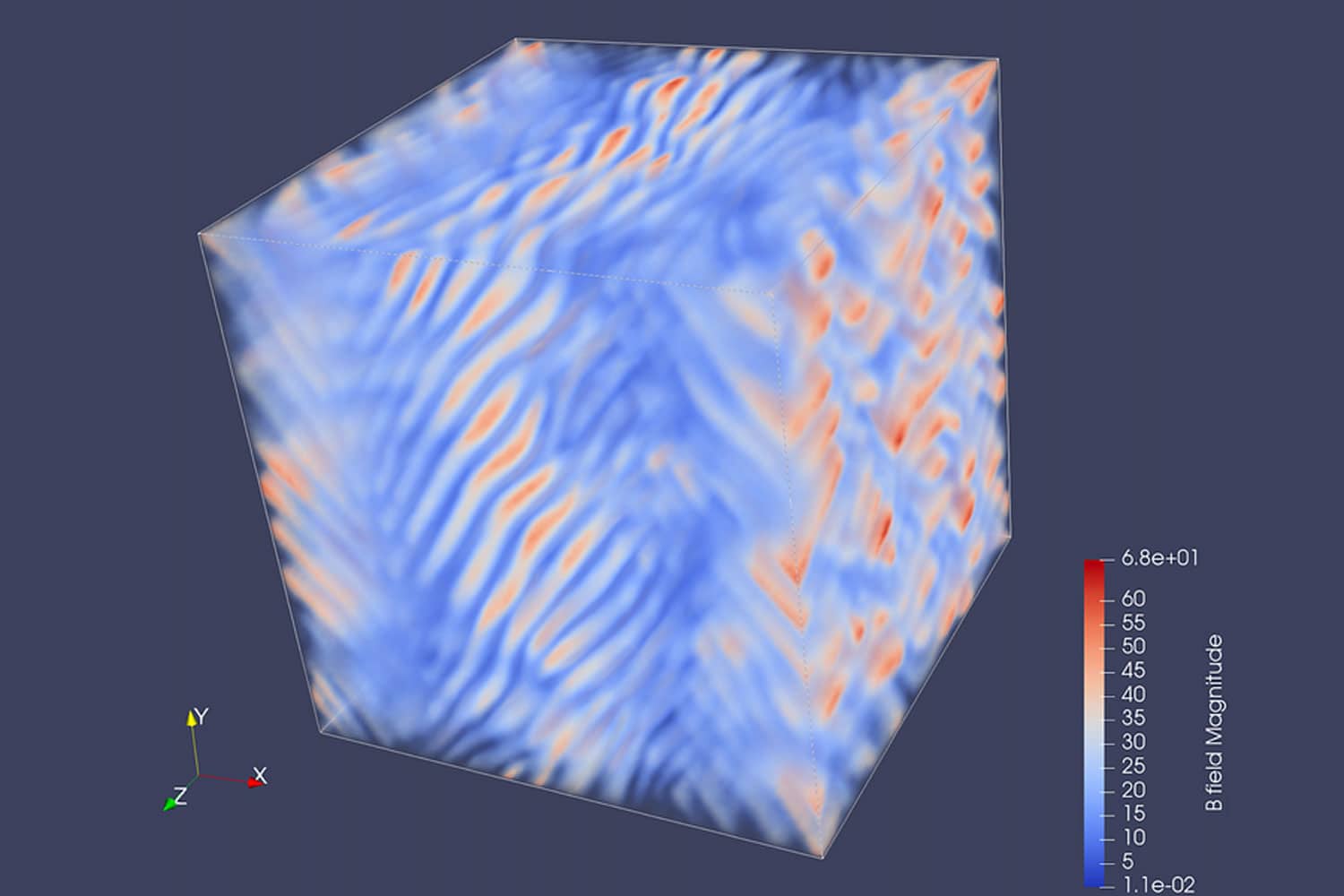When we look out into space, all of the astrophysical objects that we see are embedded in magnetic fields. This is true not only in the neighborhood of stars and planets, but also in the deep space between galaxies and galactic clusters. These fields are weak—typically much weaker than those of a refrigerator magnet—but they are dynamically significant in the sense that they have profound effects on the dynamics of the universe. Despite decades of intense interest and research, the origin of these cosmic magnetic fields remains one of the most profound mysteries in cosmology.
In previous research, scientists came to understand how turbulence, the churning motion common to fluids of all types, could amplify preexisting magnetic fields through the so-called dynamo process. But this remarkable discovery just pushed the mystery one step deeper. If a turbulent dynamo could only amplify an existing field, where did the “seed” magnetic field come from in the first place?
We wouldn’t have a complete and self-consistent answer to the origin of astrophysical magnetic fields until we understood how the seed fields arose. New work carried out by MIT graduate student Muni Zhou, her advisor Nuno Loureiro, a professor of nuclear science and engineering at MIT, and colleagues at Princeton University and the University of Colorado at Boulder provides an answer that shows the basic processes that generate a field from a completely unmagnetized state to the point where it is strong enough for the dynamo mechanism to take over and amplify the field to the magnitudes that we observe.









Comments are closed.